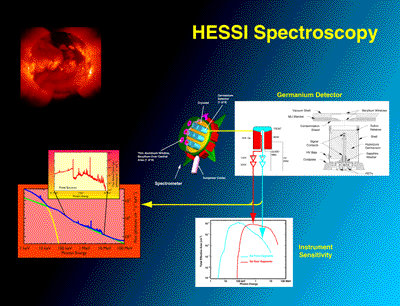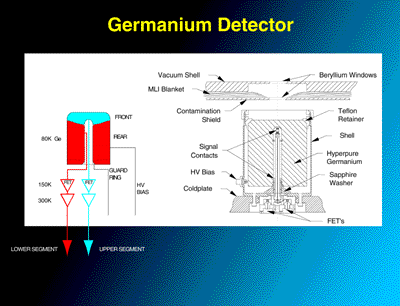|
|
|
Other RHESSI |
|
|
|
|
|
|
|
|
|
|
|
|
HESSI Spectroscopy
Germanium Detectors at Work
When a high energy photon hits a Germanium detector, cascades of electrons are knocked out of its Germanium atoms. These pulses of electrons are attracted across one of two voltage potentials to front or rear wires attached to the wall of an interior hollow. These detectors have two zones. The top zone in blue intercepts the lower energy X-rays and the bottom or rear zone in red reacts to the more penetrating higher energy X-rays and gamma-rays. The sensitivities of the front and rear zones overlap as can be seen in the graph below the detector schematic. The types of photons may be characterized by the energies and the shapes of the pulses plotted against time. In order to reduce thermal noise, the Sterling sunpower cooler reduces the operating temperatures to that of liquid Nitrogen. The detectors are buried deep inside the spacecraft under thermal insulation to prevent sunlight from overheating them to the point where thermal electrons contribute more noise than the signal given off by the X-rays. The time tagged Germanium spectroscope signal is sent on to the computer for processing into an image of the high energy event.
![]()
For technical information about the HESSI detectors, see the HESSI Proposal.
![]()
Back to HESSI Box 2 Explanation



